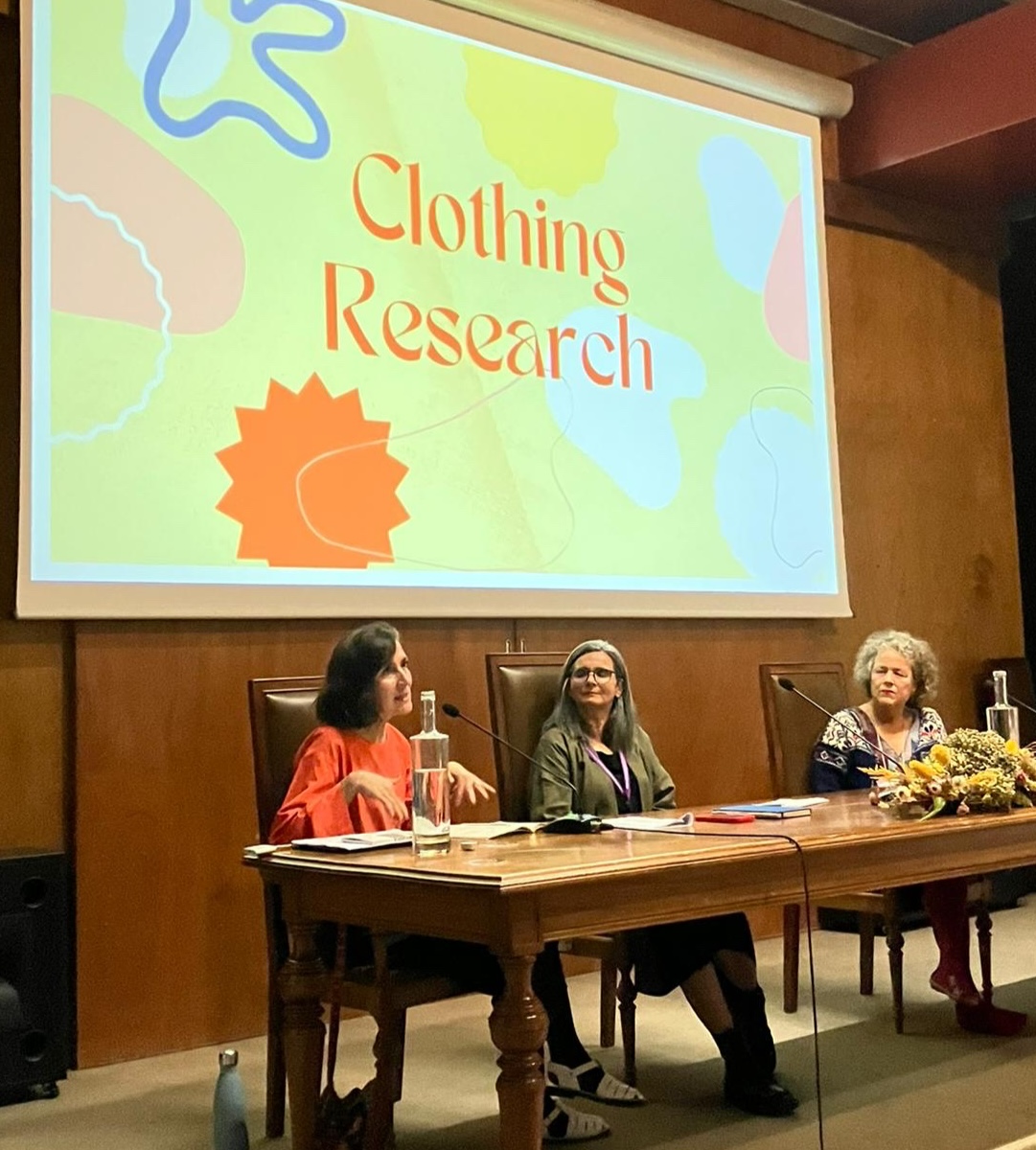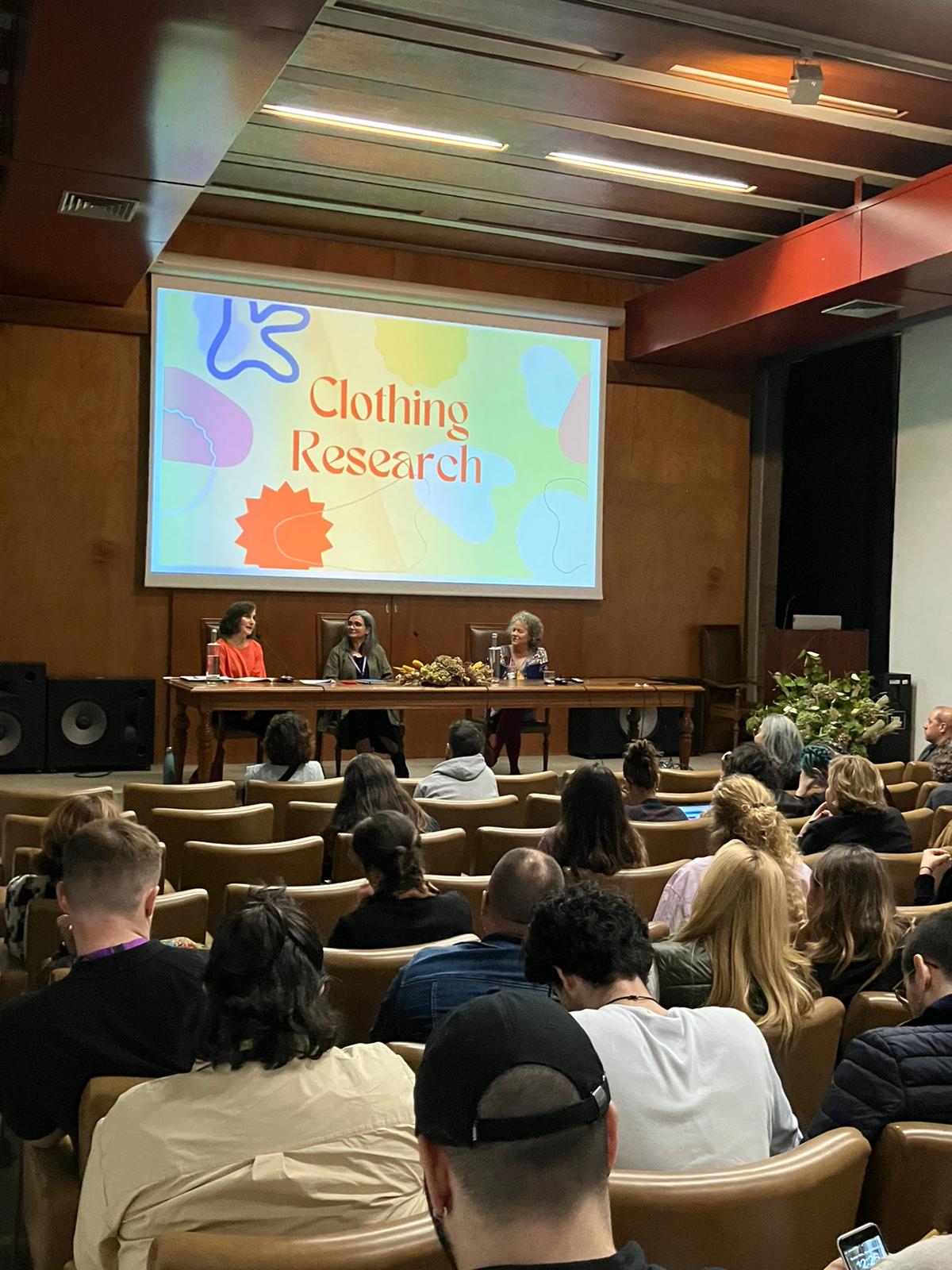Designa: Seeing design with new eyes
The Wool museum and universitty in Covilhã, Portugal hosted the Designa conference, where Clothing Research’s Ingun Grimstad Klepp and Kate Fletcher were both key note speakers. Here is their report:

Kate and I felt very honoured and privileged to be able to open this conference together. Both the importance of the environmental crisis and of textiles was taken as read in the conference, and this made it easy to talk to this diverse group of designers representing a range of disciplines from all over the world.
The overarching theme was citizenship, a challenging one in a time of decline of democracy and increasing differences and distrust. The first Designa conference took place in 2011 and the themes have always been important and challenging. It also felt special to be able to attend an in-person conference in the heart of Covilhã.
The town is characterized by its steep hills and lies tucked into the mountainside, and is a tourist destination, made clear by the pictures of skiers in our hotel lobby. The hotel’s name was Solneve (sun snow in Portuguese) and it felt an apt choice in which to host researchers from Norway! It is also the main urban hub for the region with a long industrial tradition, a place where textile history is embedded in every house and stone. The university and the wool museum hosting the conference are interwoven, making this a unique place for a conference. Kate was told, time and again, how Covilhã was the Manchester of Portugal. However, in Norwegian eyes, it is more reminiscent of Lillehammer. The closeness to the mountains with rich pasture landscapes, wool (not cotton as would have been the case with Manchester) and water for dyeing and power, all had more in common with Lillehammer – and possibly Leeds (sans mountains).
Nonetheless, the textile industry has been important to the development of the local university, similarly to Manchester and Leeds. Lillehammer lacks that aspect.
The building in which the conference took place was part of the wool museum and was originally the site of the Royal Textile Factory from the 1760s. The museum and the university have brought new life to the old industrial buildings. The new institutions are literally building on old textile production locations, layering on top on old terrasses, and wells previously used for dyeing and scouring, and all the other stages of production.

After a formal welcome, Kate’s and my keynotes opened the conference. The session was led by the director of the wool museum, Rita Salvado. In her talk, Kate explored design themes and actions of nature relations, extending the ideas of citizenship to include the greater-than-human world. I followed up with “Clothing consumers as citizens, and the role of design” where I ended with wool as an example of design for and by citizens, with the example of Tingvoll ull. It was a fitting and soft place to land in this wool-town.
While Kate lifts and expands on concepts, my perspectives are often rooted in the technical and practical realm, as well as including material and political aspects. We were both able to respond to the many questions that followed our key notes, a both felt this was rare moment for us and our clothing research colleagues in the audience, Irene Maldini and Ana Neto.

Other conference-goers included fashion and design students from the local university and researchers from many other corners of the world, including a group from NTNU, representing Norway and brought with them warm greetings from Mari Bjerk, in addition to many excellent thoughts and reflections on the presented material. The themes that were discussed were broad, with a lot of emphasis on AI and different forms of design of systems and social relations. This was made possible by a responsive and positive audience, who were given ample time to ask their many questions.
In between we were also able to tour the wool museum, which impresses with its size, content and engagement with the town’s citizens and visitors, adding to the interesting discussions between Rita, Irene, Kate and myself. Rita’s background as a textile engineer, paired with an openness and curiosity about how wool’s history can come more to the forefront in understanding the places geographically and for tourist development, made it easy to find common ground.
The last keynote speaker, Nuno Jardim Nunes, represented the impressive initiative, the New European Bauhaus, with the talk “Bauhaus of the Seas”, in which he emphasized the importance of interviewing non-humans, and with that made a nice connection to Kate’s keynote. Nuno spoke on how they feed sounds from sea dwellers through AI.
It felt like it was not the last time our paths will cross the warm and sometimes snowy Portuguese wool town: Covilhã.
